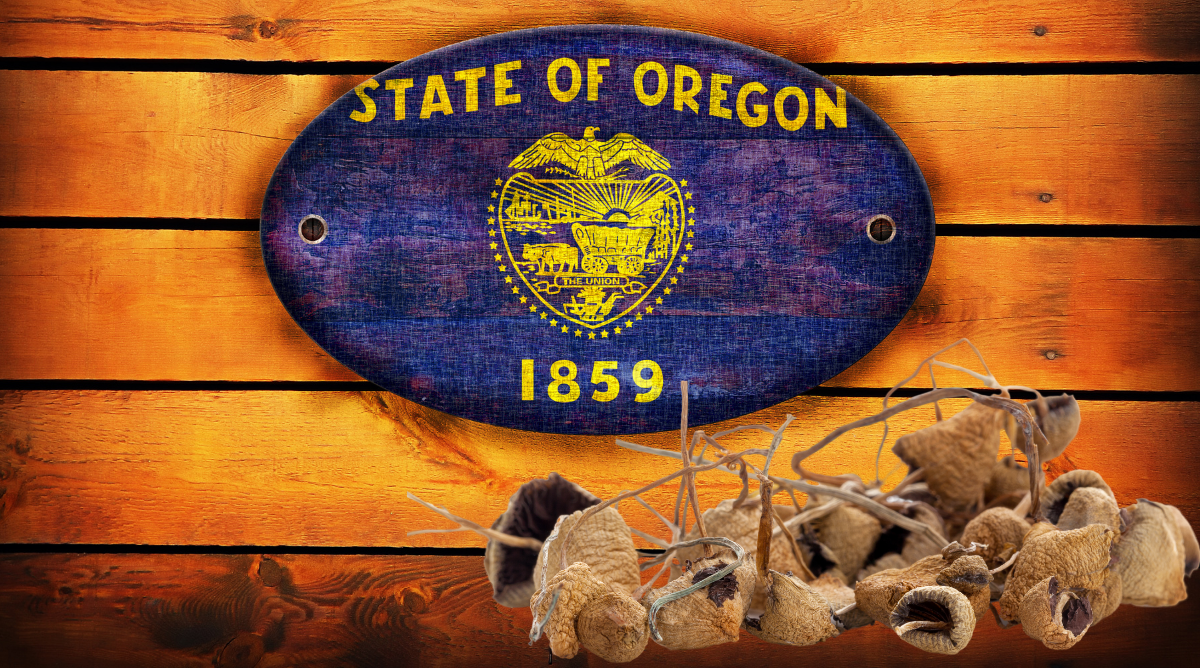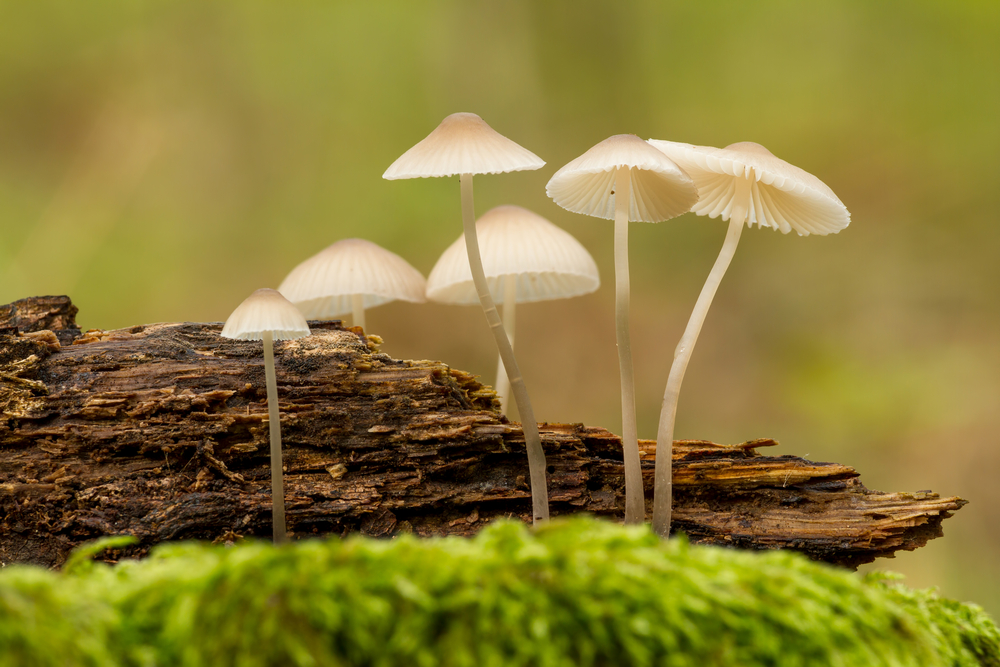
If you had to guess which state in America would be the first to legalize psilocybin, would you have thought Oregon? We assumed it would be California or Colorado that leaped first. But Oregon surprised everyone by legalizing psychedelics for therapeutic use.
On election day in November 2020, Measure 109 was placed on the ballot for a decision by voters. There were two questions placed on the ballot for Oregon voters:
There were 1,269,881 votes in favor of the act, with 55.75% support of the measure, and the majority vote held. This means the Oregon Health Authority (OHA) will start working immediately on administration and infrastructure to launch the new therapeutic psilocybin program.
It’s a mushroom. Plain and simple. But not just any kind of mushroom. It has a name we guarantee you are not going to be able to pronounce. Psilocybin is 4-phosphoryloxy-N,N-dimethyltryptamine. Psilocybin grows naturally in Mexico and select areas of South America. It can also be found in the United States’ subtropical humid areas, from Florida to states along the Gulf coast.
Psilocybin is categorized as an indole-alkylamine (tryptamine). We know more science words. Psilocybin has a structure that is very similar to lysergic acid diethylamide. Or LSD for short. Both substances create psychedelic hallucinogenic effects as they act on the 5-HT receptors and serotonin.
When you feel a rush of happiness or contentment, that’s your brain flooding with serotonin, the ‘happiness hormone.’ Very rarely are psilocybin trips a negative thing. It generally promotes relaxation and ease, with a side order of cheerfulness. Some patients can experience yawning, drowsiness, paranoia, and in very rare cases, panic, particularly if they have never taken a hallucinogenic drug before.
The average psilocybin trip takes about 3-4 hours before some patients will be ready to sit up and get mobile safely. Individuals with a lower tolerance may need to ‘sleep off’ the effects.

One of the interesting aspects of psilocybin is how long a single dose can influence behavior and brain patterns after treatment. For instance, many people who have treatment-resistant depression may have a psilocybin session in a clinic—followed by psychological counseling or cognitive-behavioral therapy (CBT). Cognitively, it is believed to breakdown the walls that hide trauma and bring them to the surface so that they can be confronted and hopefully resolved through therapy.
Up to one month after a single psilocybin session, the brain may continue to retain that ‘openness’ or state of memory retrieval. Psilocybin treatments have been studied extensively for individuals with post-traumatic stress disorder (PTSD). A single psilocybin ‘trip’ could allow a patient weeks of beneficial effects that allow for progress to be made with weekly psychiatric therapy.
When traumas are buried in the subconscious mind, they may continue to present as upsetting dreams and flashbacks. Individuals with PTSD can feel like they are reliving a past trauma over and over again. But they can’t access the trauma or start to dismantle it with therapy because it is ‘locked down’ in the brain.

The new act to legalize mushrooms for therapeutic use in Oregon has been called “The Psilocybin Services Act.” The Oregon Health Authority (OHA) will have two years to develop the program. A new Oregon Psilocybin Advisory Board (OPAB) will be created to facilitate the new program under Measure 109.
Patients living in Oregon should not expect access to psilocybin treatments for almost three years. After the legislation has been written, the licensing of operators and medical providers will happen next. A code of conduct will have to be created, and dosage standards will have to be researched and established. All before the first patient schedules an appointment for a mental health treatment with psychedelic psilocybin.
Even though treatments will be state legalized in Oregon, that does not mean the services will be available in every county. One caveat under Measure 109 is that communities will have the right to say yes, or no to the introduction of psychedelic treatments or products in their community.
Psilocybin can be administered therapeutically in a variety of different ways. In a clinical environment, a dose can be administrated with a needle. Patients may combine psilocybin ‘trips’ in a clinical setting with cognitive behavioral therapy (CBT) immediately following the controlled dose. The dose can be administered by injection or through oral drops.
Depending on what the Oregon Psilocybin Advisory Board (OPAB) decides, psilocybin products may be available. It would be controlled much the same way as medical cannabis is sold to patients. Products with psilocybin that may become available in medical dispensaries include oral strips, candies, tinctures, and other edibles.
Because it is a psychedelic drug that can create mild to moderate hallucinations, it is often provided in a clinical setting. A controlled and safe room is equipped for the patient and a comfortable chair that reclines so that they can relax. Next, the dose is administered, and the patient is allowed to progress through the ‘trip.’
While Oregon was the first state to legalize the use of psilocybin products according to guidelines from the OHA, other states have started to move in that direction. Possession may still result in a fine of $100 in Oregon, but no further legal action such as a misdemeanor charge will be filed. Psilocybin possession has been reduced to a maximum, a Class E violation. And if you are detained for possession of psilocybin in Oregon, you may be required to submit to a health evaluation.
In 2019, Denver Colorado approved Initiated Ordinance 301 with 50.64% voter support. This made the adult possession and use of mushrooms virtually decriminalized. The ordinance prevents Denver law enforcement from using resources to charge and arrest citizens for psilocybin use.
During the 2020 election, voters in Washington, D.C. supported a new initiative that did not legalize mushrooms but made it a low arrest priority. The Initiative 81 question passed with 76.07% of the vote. In the District of Columbia, the non-commercial cultivation, distribution, possession, or use of ‘entheogenic plants’ is the lowest law enforcement priority.
Addressing the statewide legalization of psilocybin has proven to be administratively burdensome. In California, cities like Oakland, Ann Arbor, and Santa Cruz have decriminalized psilocybin. And they have created new local laws and ordinances.
Featured Image: StockPhotoAstur | Getty Images (Canva)
No Information on MarijuanaDoctors.Com should be used to diagnose, treat, prevent or cure any disease or condition. You can view our Full Disclaimer here.